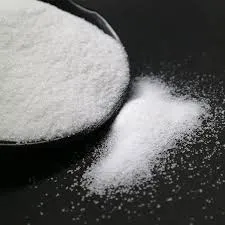Understanding Additives of Plastics Enhancing Performance and Sustainability
Plastics have become an indispensable part of modern life, utilized in a multitude of applications ranging from packaging to construction materials. However, the performance of many plastic materials is significantly enhanced by the incorporation of various additives. These substances play a vital role in determining the properties of plastics, aiding in their processing, durability, and functionality. This article delves into the types of additives used in plastics, their roles, and the growing importance of sustainability in the industry.
Types of Additives in Plastics
1. Stabilizers One of the primary concerns with plastic products is their susceptibility to degradation due to environmental factors such as UV radiation, heat, and oxygen. Stabilizers are added to plastics to mitigate these effects. For instance, UV stabilizers absorb harmful UV light and convert it into harmless heat, thereby preventing the plastic from becoming brittle and discolored over time.
2. Plasticizers These additives are used to increase the flexibility and workability of plastics, particularly polyvinyl chloride (PVC). Plasticizers reduce the intermolecular forces between polymer chains, allowing them to move more freely. However, concerns about the health effects of certain plasticizers, such as phthalates, have prompted the development of safer alternatives.
3. Fillers Fillers are used to enhance the mechanical properties, reduce production costs, and improve processing characteristics of plastics. Common fillers include calcium carbonate, talc, and glass fibers. While fillers can significantly improve the strength and rigidity of plastic, they can also affect the aesthetic qualities of the material.
4. Colorants Color additives transform the appearance of plastics, allowing for aesthetic customization. These can be dyes or pigments, which not only add color but can also contribute to the material’s performance properties. For instance, certain colors can enhance UV resistance, making them ideal for outdoor applications.
5. Flame Retardants Safety is a paramount concern in many applications, especially in construction and electronics. Flame retardants are incorporated into plastics to reduce their flammability and inhibit the spread of flames. However, the presence of toxic flame retardants has raised health and environmental concerns, leading to increased scrutiny and regulation.
6. Antioxidants These additives are crucial for protecting plastics from oxidative degradation during processing and use. They help to prolong the lifespan of plastic products by preventing chain reactions that lead to breakdown under heat and stress.
additives of plastics

The Importance of Sustainability
As the environmental impact of plastics becomes a growing concern, the plastic industry is under pressure to improve sustainability. This has led to significant innovations in the formulation of plastic additives. Biodegradable additives are one area of focus, enabling plastics to break down more quickly in the environment. Additionally, there is a push for using recycled materials in the formulation of additives to reduce the carbon footprint of plastic production.
Moreover, manufacturers are increasingly seeking ways to minimize the use of harmful chemicals in plastic additives. Regulatory changes and consumer preferences are driving this shift, with many companies actively working to replace hazardous substances with safer alternatives.
Future Directions
The future of plastic additives lies in balancing performance enhancement with sustainability. Researchers are exploring new bio-based additives that offer similar properties to traditional additives without the associated environmental risks. This includes plant-derived plasticizers and natural fillers that could revolutionize the industry.
Furthermore, advancements in technology may lead to more efficient methods for recycling plastics, where additives do not hinder the recycling process. Innovations in polymer chemistry are paving the way for smarter plastics that can adapt their properties based on their environment.
Conclusion
Additives are essential for optimizing the performance and functionality of plastics in various applications. However, the growing emphasis on sustainability presents both challenges and opportunities for the industry. By prioritizing eco-friendly alternatives and innovative formulations, the plastic industry can ensure a more sustainable future while continuing to meet the diverse needs of consumers. As we advance, the integration of responsible additive technologies will be paramount in shaping the next generation of plastic materials that are not only effective but also environmentally sound.

